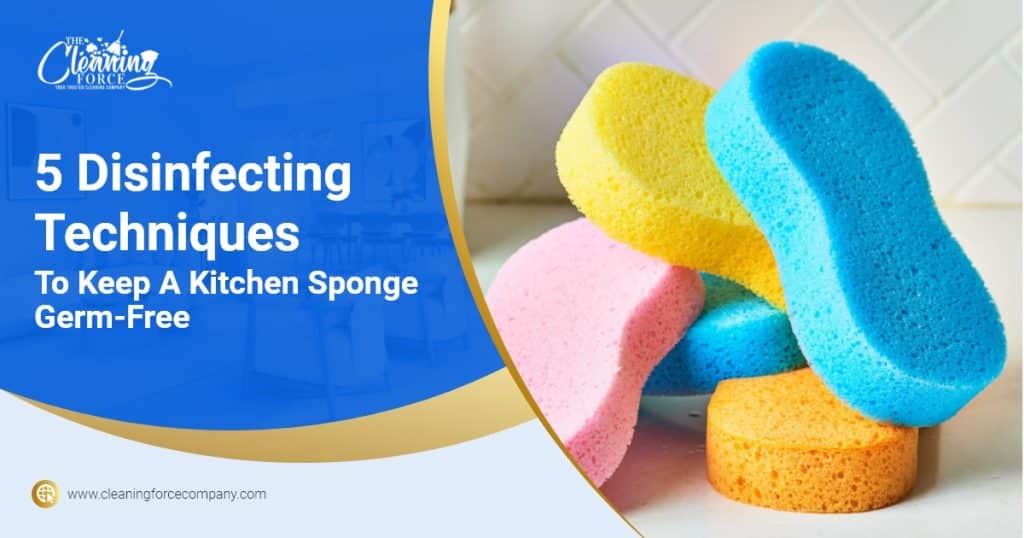A kitchen sponge can look clean yet full of microorganisms that will spread all over our plates, pots, and cooking essentials. To keep your sponge as bacteria-free as possible, you need to disinfect it once a week.
Let’s keep those germs and bacteria away from our kitchen sponge! We’ll give you some techniques to help you disinfect it.
Technique 1: Vinegar solution
An easy way to disinfect your kitchen sponge is with full-strength vinegar; that’s it!
- Pour white vinegar into a bowl and soak your sponge for 5 minutes.
- Take the sponge out and rinse it with warm water.
- Squeeze as much liquid as possible and let it dry in a cool, dry place.
Technique 2: Bleach & water solution
This next technique is the most used in households for disinfecting kitchen sponges:
- First, combine 1 tsp of bleach for every cup of water in a bowl.
- Soak your sponge into the mixture and leave it there for 5 minutes.
- Take the sponge out and rinse it with warm water.
- Squeeze the sponge and let it dry in a cool, dry place.
Technique 3: Microwave
According to studies by the Michigan State University & USDA, microwaving your sponge in a bowl of water will kill 99.9999 percent of bacteria, mold, and yeast.
- Pour water into a microwavable container and soak your sponge in it.
- Microwave for 5 minutes.
- Let it cool for about 15 minutes before removing it from the microwave.
- Squeeze as much water as possible and let the sponge dry in a cool, dry place.
Warning: Make sure your sponge does not have a scouring pad or any material composed of metal.
Technique 4: Boiling water
Does your sponge have a scouring pad? No worries, you can boil about 3 cups of water in a pot and make it boil.
- Add your sponge to the boiling water and wait about 5 minutes to let the high temperature kill the bacteria.
- Remove the pot from the stove and wait about 15 minutes to let it cool.
- Squeeze the sponge and let it dry.
Technique 5: Dishwasher
Want to make disinfecting even easier? Place your kitchen sponge on the top rack of your dishwasher, and that’s all!
Make sure your dishwasher is set on the high heat-dry mode, and use the longest, hottest setting for the best results.
Note: Michigan State University and USDA studies concluded this technique could also kill 99.9998 percent of bacteria, mold, and yeast.
Is there a way to keep my kitchen sponge even cleaner?
Yes! There are many things we usually do with our sponges that we should avoid doing to prevent the accumulation of more microbes. Here are some tips for you:
- Your kitchen sponge should be used for washing dishes only and nothing else. Meat juices, for example, can contain bacteria such as Salmonella or E. Coli.
- Always make sure your sponge is well rinsed and squeezed and kept in a cool, dry place.
- Everything has an expiration date. Make sure you replace your kitchen sponge when it looks worn out. As a rule of thumb, you should replace it every month.
Want a sparkling clean and disinfected kitchen?
The Cleaning Force has your back! We are a team of professionals who will make your kitchen and home look amazing. Just book an appointment and let us do the rest. Get your free quote now!






